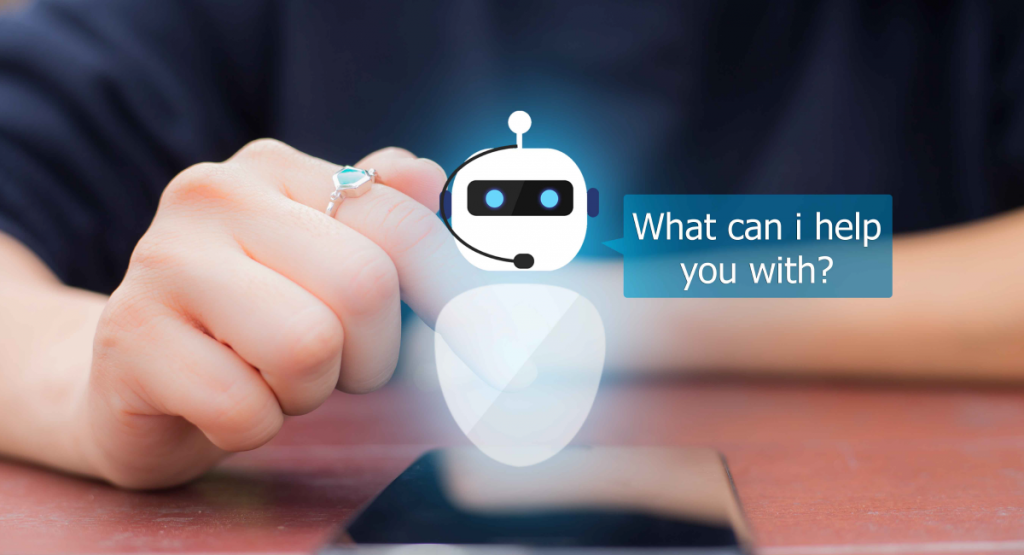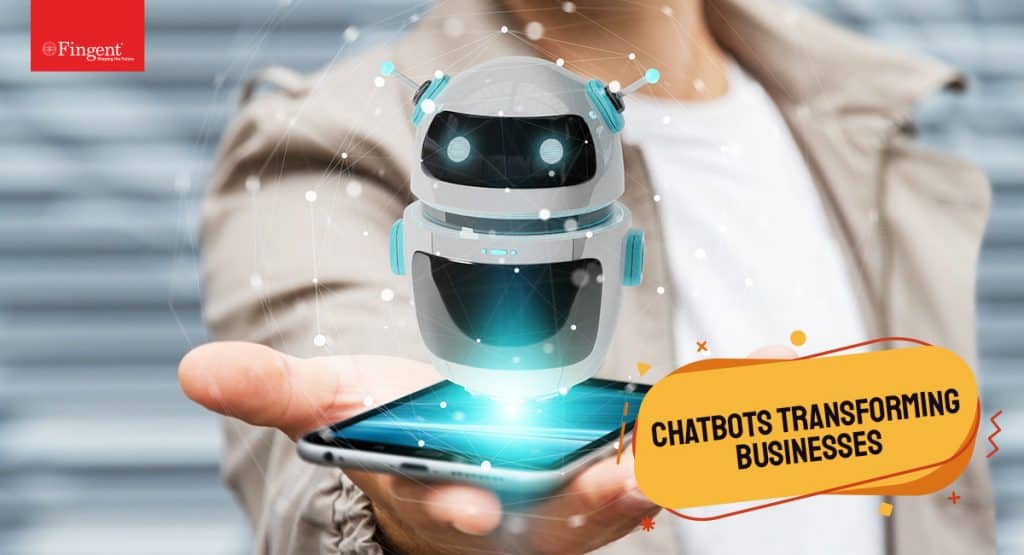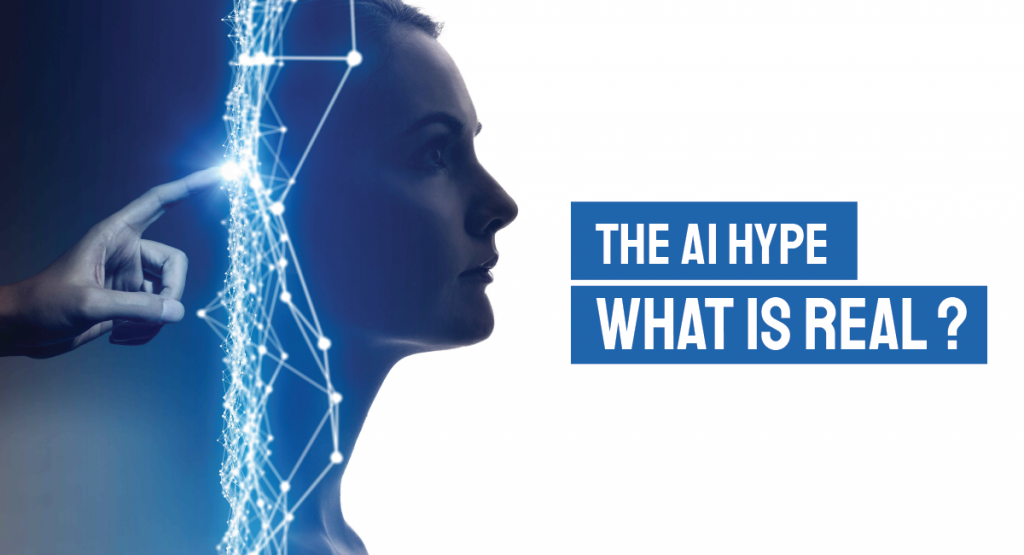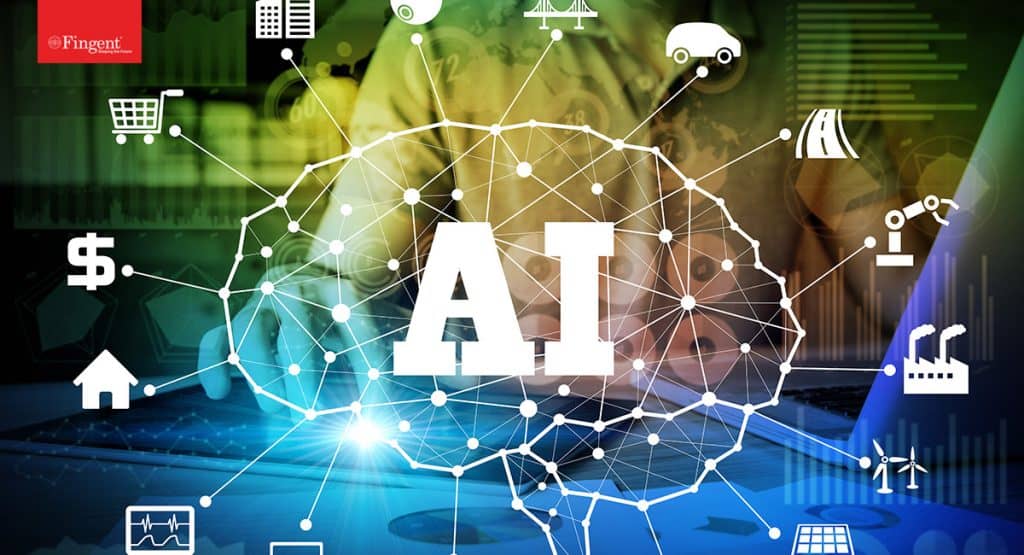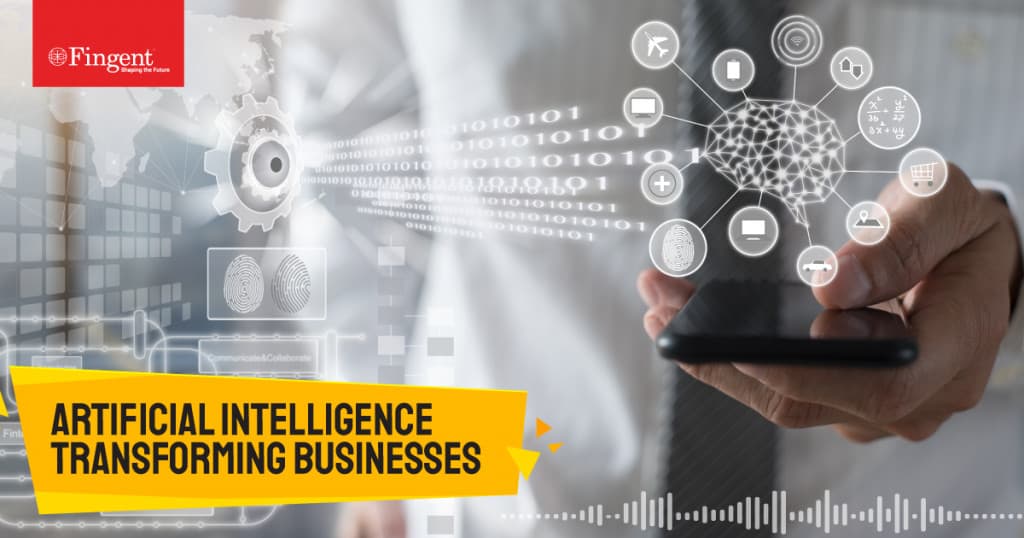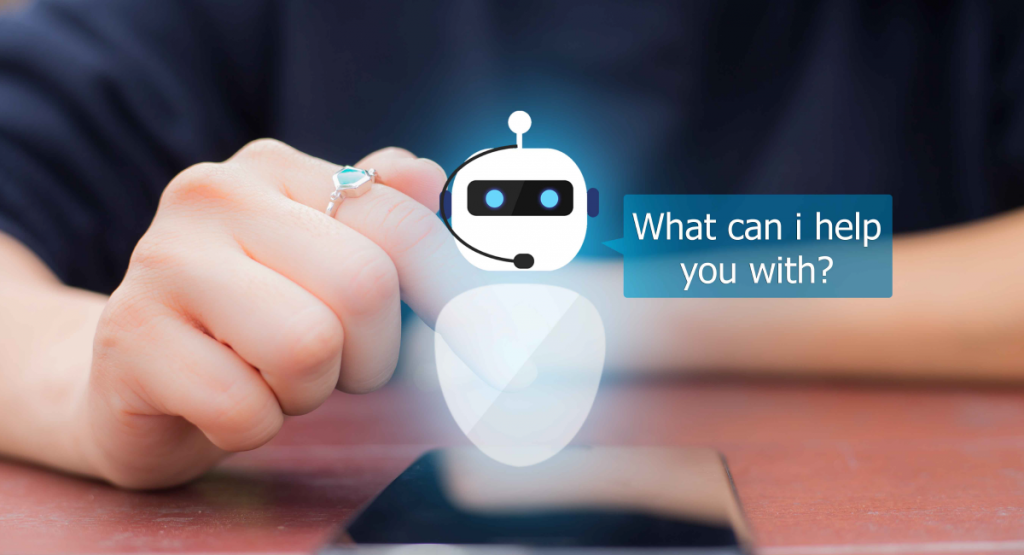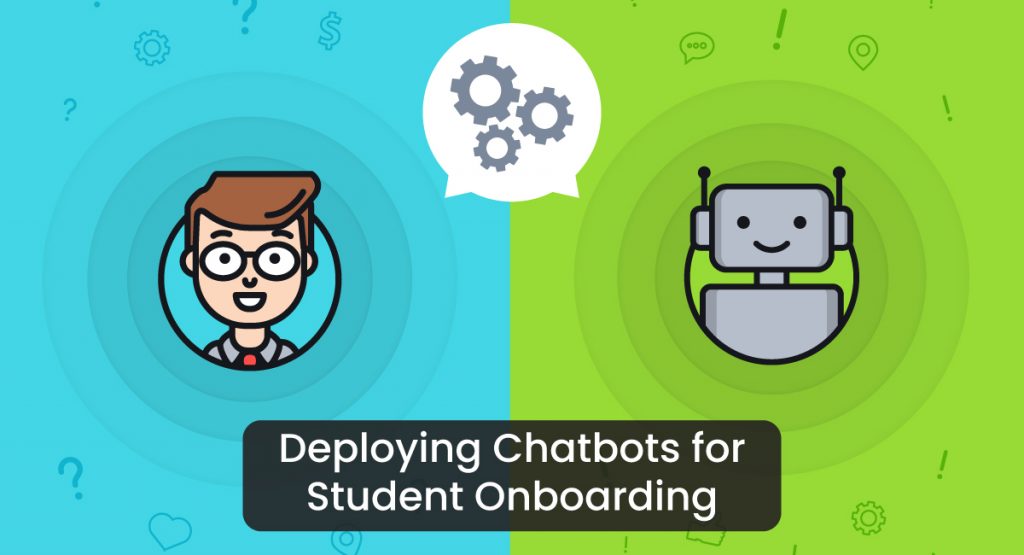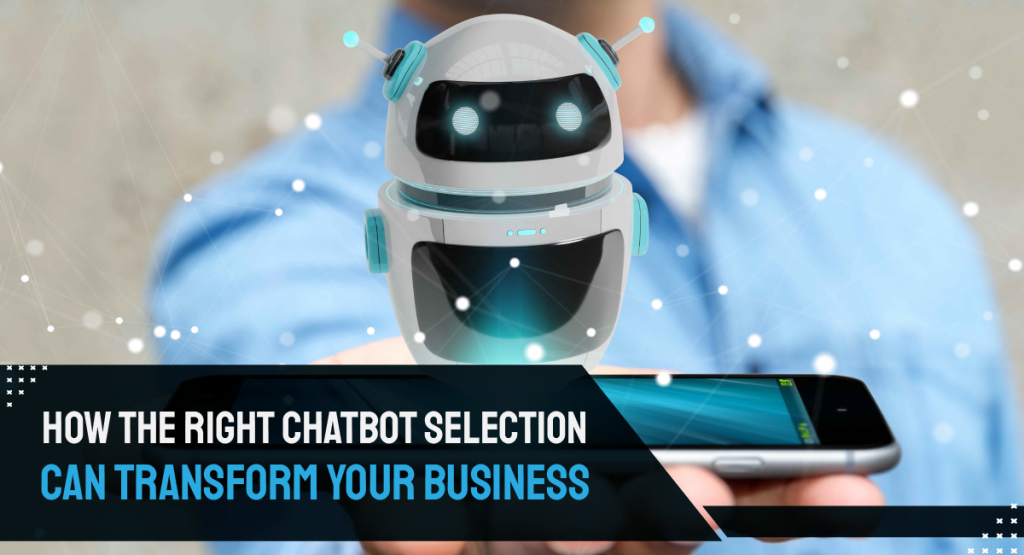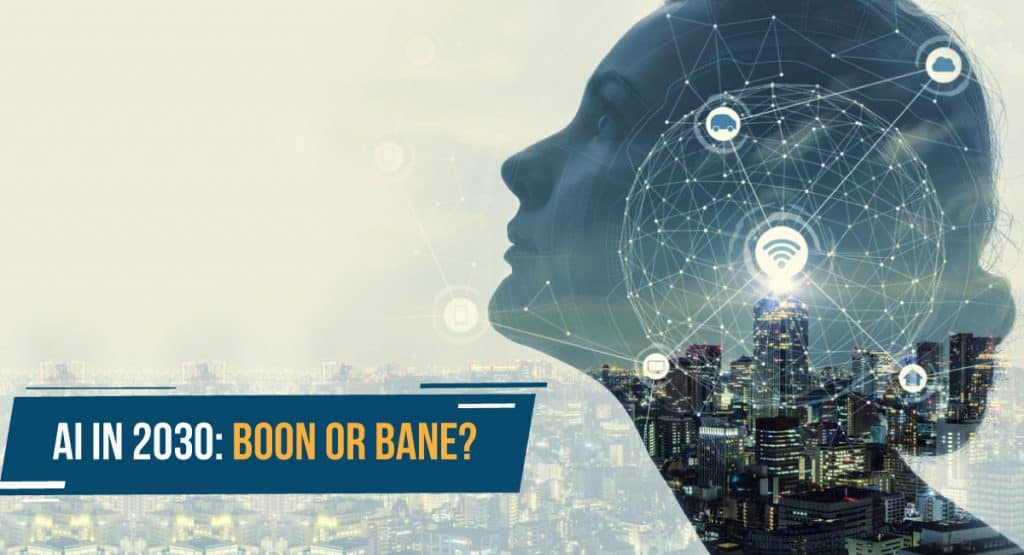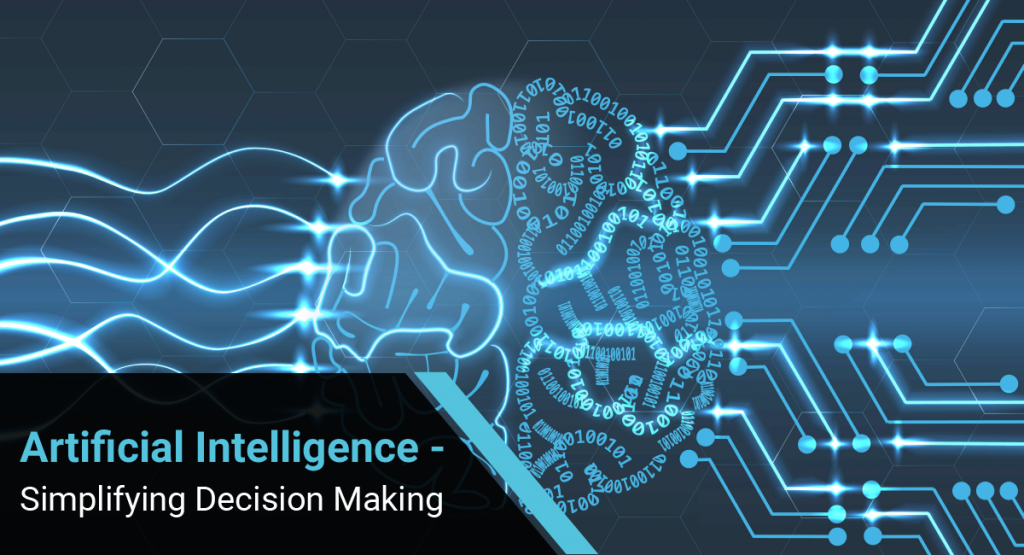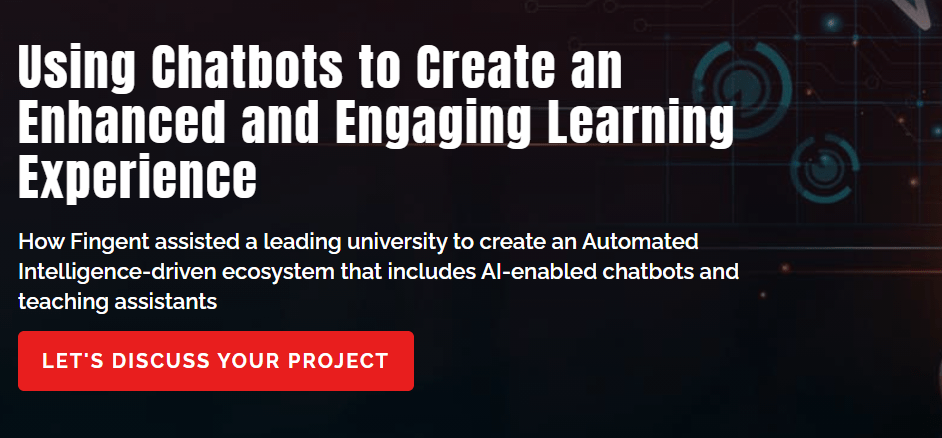Tag: AI
Language gives power. Using NLP (Natural Language Processing), conversational AI gives businesses the power to stay on top of the game.
Why can we say that?
Today, digital-first marketing is a growing trend and conversation is the defining element of a digital-first customer experience.
Is your mind racing with questions like what is Conversational AI? How does it work? What are its benefits? Can my business benefit from Conversational AI?
Well, this article answers each of those questions. By the end of this article, you will understand all you need to know about conversational AI.
What Is Conversational AI
Conversational AI is a subset of Artificial Intelligence. It uses Machine Learning (ML), Natural Language Processing (NLP), neural networks, and speech recognition technologies to mimic human conversation. Conversational AI can empower businesses to automate highly personalized customer service resolutions at scale. This makes the customer’s experience unique and relevant while reducing the effort and resolution time of the company. As a result, you have happy customers who stay loyal to your brand.
Conversational AI is becoming one of the most popular technologies. The global conversational AI market size is expected to grow at a CAGR (Compound Annual Growth Rate) of 21.8% by 2026.
This unique technology is used to engage customers in services such as support, marketing, helping a prospect enter a funnel, and even sales. Conversational AI will make brands more human and help engage with customers more personally.
The most common use of conversation AI experience is through voice assistants. This allows brands to participate in direct and uninterrupted conversations at scale.
Read more: Capitalizing on AI Chatbots Will Redefine Your Business: Here’s How!
How Does It Work?
As mentioned earlier, NLP is one component that enables conversational AI. It is an umbrella term that includes NLU (Natural Language Understanding) and NLG (Natural Language Generation).
Human language is complex. People can say the same thing in many different ways. However, a computer can decipher customers’ intent with the help of natural language understanding technology. It looks at the context of what a customer said to accurately understand what a person needs. Leveraging NLU can enable conversational AI to understand grammatical mistakes, abbreviations, slang, and misspellings just like a human would.
Once it understands what a customer wants, ML is used to determine the appropriate response. Over time, conversational AI learns which response is the best and improves its accuracy.
Finally, NLG creates an easy-to-understand reply that’s as human-like as possible. Advanced conversational AI can use contextual awareness to remember bits of information to facilitate more natural conversation.
How Does Conversational AI Benefit Different Industries?
Conversational AI technology has substantial benefits for businesses across industries. Here are the most important benefits:
1. More engaging and easy interactions
Reading dry FAQs can be boring and may drive your potential customers to your competition. On the other hand, having the choice to take part in a conversation can be more engaging and has the potential to convert your leads.
Because conversational AI can use past interaction history or other relevant data, it can personalize each customer interaction. It spares the customer the trouble of searching through multiple pages to find answers to his questions.
2. Higher customer satisfaction
Conversational AI allows industries such as healthcare and hospitality to provide real-time information to their end-users. AI-powered chatbots can be accessed more readily than live support. Such quick support helps avoid long waiting times improving customer experience. Improved customer satisfaction can impact customer loyalty and referrals.
Read more: 5 Leading Chatbot Use Cases Explained with Real-life Examples
3. Greater support with minimum cost
Customer care costs have a high impact benefit on finance industries. Conversational AI can help keep customer care expenditures in check. It can improve overall efficiency and productivity by handling routine issues much faster. These bots can also reduce customer support tickets.
They can deflect the number of routine tickets sent to human agents and boost team productivity. Chatbot templates can be used to collect information and help resolve clients’ queries faster. AI-powered bots provide relevant information faster and boost the accuracy rate over time. They can learn from past interactions and continuously evolve.
4. Improved lead generation
Lead generation is the foremost goal of sales and marketing teams in industries such as insurance. Virtual assistants can engage visitors who browse the site and improve lead generation.
5. Increased operational and customer support efficiency
Conversational AI can come to the rescue when a business experiences a sudden rise in the volume of chats. Plus, these chatbots are cheaper and faster than hiring new agents. With automated operations, businesses can focus on other important functions.
Additionally, conversational AI can determine a customer’s emotional needs and communication preferences from previous interactions. Hence, deploying a conversational chatbot is a wise decision during the holiday season.
6. Increased reach
Conversational AI enables your brand to reach a wider audience as it can understand both verbal and written speech. For example, you can reach elderly and hearing or vision impaired customers who find it difficult to navigate the web.
7. Boost revenue
Conversational AI can considerably reduce website costs. When properly implemented, a conversational AI chatbot provides live support and assistance 24/7. They can qualify leads by asking predefined sales queries to nurture the lead.
Once the lead fills a form or signs up for a newsletter, the chatbot can analyze the text of the lead and find the most appropriate response. This is especially useful for banking services and increases their revenue.
Conversational AI chatbots can quickly act on positive user intent and present a service or product that meets their preferences.
Use Cases
1. eCommerce
Conversational AI helps businesses form customer relationships that last and ultimately sell more products. It can help in cross-selling and upselling products, finding specific products, and placing orders. It can also answer FAQs, make suggestions about the size, and even help with returns.
2. Banking
Conversational AI can be used to provide a simplified and intuitive customer experience. It can facilitate transactions, help with account services, and assist customers to apply for loans.
Among the best use cases of banking are helping find a nearby ATM, assisting with mobile deposits, and sending billing reminders and notifications.
3. Insurance
Conversational AI can help distribute products, resolve claims, and increase customer awareness and education. It can also manage renewals, and gather customer feedback and reviews.
4. Healthcare
In many ways, conversational AI can make things easier for patients, doctors, nurses, and other healthcare staff.
It can improve operational efficiency by answering common health questions, booking appointments, and checking up on patients. It can even escalate emergency cases.
Read more: MUSA: Fingent’s AI-powered Virtual Assistant Helps Employees With HR & DevOps Queries
Quick Resolutions, Seamless Conversations
Today, customers expect a quick resolution and seamless conversations when interacting with your business. Conversational AI will assuredly provide personalized assistants that both serve and predict customer needs.
There is no doubt that conversational AI will continue to evolve into a sophisticated technology. Given that, your organization needs to clearly understand what conversational AI is so you can leverage it and build customer experience around it.
Give us a call, get your business set up with Conversational AI, and get set to reap the rewards.
Stay up to date on what's new

Featured Blogs
Stay up to date on
what's new



Talk To Our Experts
Better businesses need better cyber security.
Regrettably, threats to cyber security have become the new norm across public and private sectors. The pandemic affected all types of businesses. If anything, uncertainties around remote working amplified cybercrime. As a result, cyber security’s importance has become more clear now than ever before.
As cyberattacks become more sophisticated, businesses will have to stay one step ahead. Security professionals need strong support from advanced technologies like Artificial Intelligence (AI) to protect their companies from cyber threats.
AI can enable security teams to handle greater and more complex threats than ever before. More specifically, it has proven to identify and prioritize threats. In some cases, AI has even taken automated action to quickly remediate security issues. This article considers how AI can redefine the cyber security needs of an organization.
Before we discuss further, let’s find out the impact cyberattacks can have on businesses.
How Cyberattacks Affect a Company’s Performance and Value
Protecting a company against cyber threats is costly. It can impact the relationship between your company and your customers.
Unfortunately, cyber threats are never static. Millions are created each year and are becoming more and more potent.
In a survey conducted by Hiscox-Cyber Readiness Report, 28% of the businesses that suffered attacks were targeted on more than five occasions in 2020. Companies have lost millions to such cyber security breaches. Companies like financial services, technology, and energy were hit the hardest.
That is not all. Cyber security breaches have caused several other damages including:
- Outlays such as insurance premiums and public relations support.
- Operational disruption.
- Altered business practices.
- Business’s standing and customer trust.
- Stolen intellectual property including product designs, technologies, and go-to-market strategies.
- Legal consequences.
Read more: Quantum Vs Neuromorphic Computing – What Will the Future of AI Look Like!
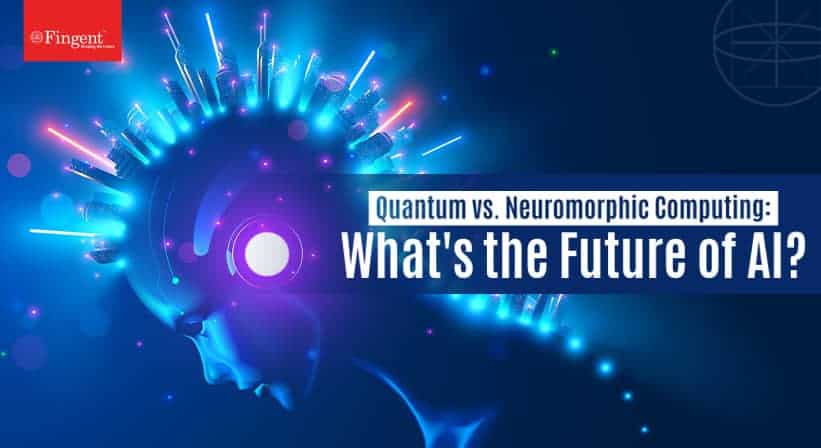
How AI Contributes to Cyber Security
Cyber threats are real and certainly worrisome to businesses. It is important to protect critical digital assets.
However, it takes planning and commitment of resources. With good security operations, you can stay on top of most of the most serious cyber threats. True, there may be smart thieves, but Artificial Intelligence can provide smarter security.
Here are 5 specific ways AI can contribute to cyber security:
1. Robust Zero-Day Malware Detection
Malware is unpredictable. And signature-based tools will not detect attacks that have never occurred before. Given that, is it possible to defend against something unpredictable? Yes!
AI is cable of grasping all the possibilities and finding relationships that traditional security tools would miss. While traditional security strategies have their place in cyber security, they are insufficient to detect and prevent zero-day attacks.
Zero-day attacks are best detected by automatically identifying aberrant behavior and alerting administrators immediately. AI can enable organizations to be more proactive and predictive with their security strategies.
Artificial Intelligence provides visibility and security for an organization’s entire data flow. AI helps organizations gain such visibility by dismantling each incoming file to search for any malicious elements. Simultaneously, it also looks at the user and network behavior and anomalies from expected activities.
Together with ML, AI adapts its behavior to new network conditions, constantly adapting to evolving security conditions. Even those hackers who use modern ML penetration methods cannot be fool AI-enabled cyber security.
We cannot stop security breaches from happening. But Artificial Intelligence helps organizations avoid potential disruptions before attackers wreak havoc.
2. AI Can Safeguard Large Amounts of Data
Whether a company is small or mid-sized, there is a lot of data exchanged between customers and the company every day. This information must be safeguarded from potential cyber threats. Cyber security experts cannot always inspect all the data for potential threats.
AI is the best option to detect threats to routine activities. Because of its automated nature, AI can sift through large amounts of data in real-time and identify any hazards lurking amid the chaos.
Read more: Artificial Intelligence and Machine Learning – The Cyber Security Heroes Of FinTech!

3. AI Takes Care of Redundant Cyber Security Operations
Hackers constantly modify their methods but the fundamental security practices do not change. Plus, they may weary your cyber security worker.
Artificial Intelligence takes care of redundant cyber security operations while imitating the best of human traits. It also does a thorough analysis of the network to locate security flaws that may harm your network.
4. AI can boost response time
Ideal security is the one that can detect security threats in real-time. The principle of ‘a stitch in time saves nine’ applies here.
Integrating AI with cyber security measures is a sure way to detect and respond to attacks immediately. Unlike humans, AI does not miss a spot when examining your system for risks. Besides, it can detect risks early, thereby boosting response time.
5. Authenticity Protection
Most websites allow users to log in and access services or make purchases. You will need greater protection as such a site contains private information and sensitive material. To maintain customer trust, it is important to ensure all data about your guests remains safe while accessing your site.
Artificial Intelligence can provide an enhanced security layer. AI can secure authentication when a user wishes to connect their account. Login measures like CAPTCHA, fingerprint, and facial recognition are used to determine if the attempt is legitimate or not.
Read more: Safeguarding IT Infrastructure from Cyber Attacks – Best Practices

Do Not Be Afraid!
Fingent is your reliable security partner. We provide professional security with reliable service. As a proactive security partner, we look ahead to ensure your business is successful far into the future.
Using AI’s real-time monitoring capabilities, we can spot potential issues before they become a major problem. Security experts Fingent are aware that cyber security threats are not limited to work hours. Our professionals here at Fingent will be there for your business whenever you need us.
We are in business today because of the reputation we built with our customers. We offer a unique level of enterprise IT support, and our clients can rest easy knowing that their business is always protected.
Give us a call and let’s discuss your security needs.
Stay up to date on what's new

Featured Blogs
Stay up to date on
what's new



Talk To Our Experts
AI is not just a technology; it has become part of daily lives. Thanks to AI, we witness new kinds of development in each sphere of life every day. We can access many points with AI now more than we could ever before. From the research that we do on the internet to the goods that come to our doors, AI is directing our lives and business. It has solved many problems faced by humanity. And, revolutionized technology in all industries.
Coined at Dartmouth College in 1956, Artificial Intelligence (AI) gave succeeding generations a potential for information technology that can benefit humans in a profound way. Apart from bringing efficiencies, AI is also bringing new possibilities. These possibilities continue to create new models and opportunities for businesses that tap into them. Quantum and neuromorphic computing is the way forward.
This blog takes a deeper look into quantum and neuromorphic computing and explores which companies can benefit from these technologies.
A Look at The Future Of AI
The possibilities Artificial Intelligence can create are seemingly endless. Innovations are constantly taking place in the AI world. Given that, many business and information technology leaders are looking to better understand how it will affect their business now and in the future.
Taking a look at the future scenarios for how AI could evolve can help IT leaders demystify this emerging technology. Two such technologies are called neuromorphic or quantum computing. They offer us a new way forward by fulfilling our AI-related dreams. The quantum computing market alone is expected to reach $2.2 billion by 2026, so it’s definitely worth looking into.
The future of AI also depends on improving the capacity of intelligent systems by using powerful hardware. Hardware such as neuromorphic computing and quantum computing will allow companies to build AI solutions that are extremely fast and can encapsulate more data and knowledge.
For example, a virtual assistant may now have the computing capacity to handle one or two products. But with more powerful hardware, it could cover more products. Advantages in this area are ongoing.
Let’s examine these in detail.
Read more: Answering The Top Burning Questions On AI Implementation For Businesses!
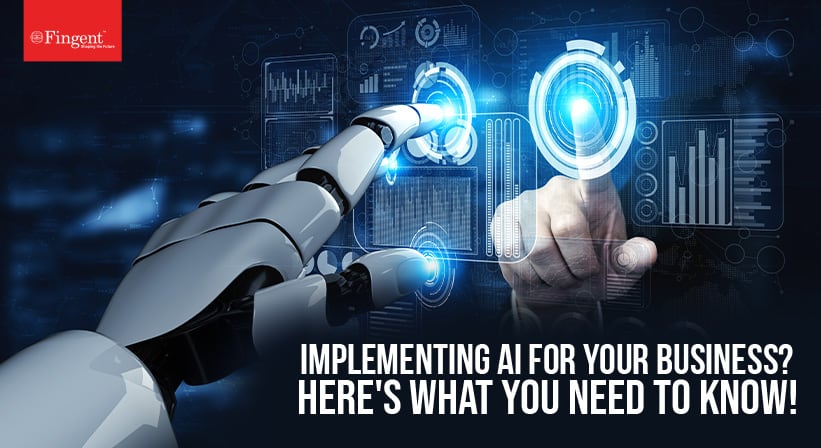
A Deeper Look into Quantum and Neuromorphic Computing
Neuromorphic computation and quantum computing always seemed that they were years away. The fact is commercial neuromorphic chips and quantum computers are in use today. These two new technologies are going to change what looked like a straight path to Artificial Intelligence.
1. Neuromorphic computation
Neuromorphic computation attempts to imitate the way a human brain works. In simple terms, hardware and software elements of a computer are wired to mimic the human nervous system and cerebral system.
The goal of neuromorphic computation is to create devices that can learn, retain information, and make logical deductions just like a human brain does. It also attempts to imitate the human brain by searching for new information.
However, unlike quantum computing neuromorphic computing does is not that demanding. Where quantum computers need temperatures close to absolute zero, neuromorphic computers can easily work in normal conditions.
This increases its practicality and potential to integrate this technology in all kinds of devices.
2. Quantum computing
Quantum computing deals with the world of atoms and subatomic particles inside those atoms. Unlike neuromorphic computation, quantum computing works on the principle of quantum entanglement.
So, the smaller the computer gets, the more powerful they seem to become. Quantum computing provided powerful new possibilities.
Though it is more complex than traditional computing, quantum computing opens the door to potentially solving very large and complex computational problems. It can potentially deliver a big computational upgrade for ML and AI computing.
Quantum computers will not replace traditional computers. Instead, they will require the support of traditional computers for their specialized abilities.
Read more: Driving Business Innovation and Success Through Sustainability

Industries That Can Leverage Quantum Computing and Neuromorphic Computation
1. Industries That Can Leverage Neuromorphic Computation
a) Aerospace and defense: Neuromorphic computing architecture can help in pattern recognition, event reasoning, and robust decision-making. It can also aid in adaptive learning and autonomous tasking for energy-efficient agile Air Force platforms.
b) Self-driving cars: Similar to space communications, neuromorphic computing enhances self-driving. In imitation of the human brain, neuromorphic chips attempt to think and learn on their own and then adapt their learning to unexpected scenarios on the road.
While conventional computers run commands sequentially, neuromorphic computers process and store data almost at the same time. This makes self-driving cars more energy efficient. It can also help autonomous vehicles learn skills and execute tasks more efficiently.
c) Healthcare: Neuromorphic platforms can be used for the hardware-based implementation of ML methods in treating Chronic Obstructive Pulmonary Disease (COPD) in home-care environments. Real-time analysis of data can be obtained by bringing data from the backend onto a neuromorphic chip.
Furthermore, securing sensitive medical data on a single chip complies better with patient privacy regulations. Since neuromorphic platforms process data near a patient, it offers a large fault tolerance for medical applications.
Moreover, hardware-based neuromorphic systems require less computational power making them perfect for PoC medical devices.
2. Industries That Can Leverage Quantum Computing
a) Aerospace: By considering an exponential number of variables, quantum computing could help determine the optimal alternative for each route. It can also help find the best way to allocate resources so that the crew and passengers are impacted as little as possible.
b) Healthcare and Pharmaceuticals: Harnessing the power of quantum computing can significantly accelerate the timelines of various stages of the pharmaceutical research and development process. It can help life science companies by accelerating the speed of the pre-clinical phase and reducing the cost of drug development.
c) Finance: Quantum computing will be able to help solve the problems of customers in finance institutes. It can optimize investment portfolios and financial derivatives. It can also enable the institutions to accurately characterize anomalous transactions and rapidly detect fraud.
d) Chemistry: It is likely that quantum computing can be applied to simulate the properties and behavior of new molecular structures in chemistry. It can address the probabilistic challenges of quantum mechanics. In the future, quantum computing is expected to predict molecular properties for new molecules.
Read more: Data and AI: How It Has Transformed Over The Years And Trends To Watch out For!
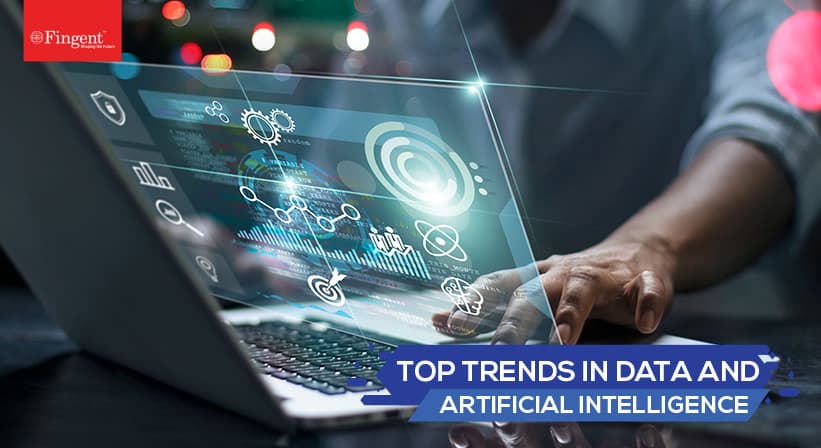
Conclusion
In the coming years, advances in Artificial Intelligence will reach the superintelligence stage. However, the transition to new technology has already begun.
Most businesses are incorporating this unique fixture as it has helped with better sales and forecasts. It has also given businesses growth opportunities. We are sure you want to get started with this too.
Give us a call and let’s discuss what is best for your business.
Stay up to date on what's new

Featured Blogs
Stay up to date on
what's new



Talk To Our Experts
Businesses are always on the lookout for ways to optimize processes and gain greater visualization. When processes work efficiently, the output of the product is higher. This leads to workflows that run smoothly with minimum errors and higher capacity. A good reason for the growing popularity of process automation and visualization.
Automation and visualization are the future of the business strategy. Gone are the days of carefully filling in graph paper by hand. Today, process automation and visualization help enterprises up their game by allowing access to real-time models capable of accurately capturing the nuanced data sets.
In this blog, we will expand on how enterprises can up their game with process automation and visualization.
How Enterprises Can Up Their Game with Process Automation and Visualization
Data visualization enables human operators to manage vast sets of data, glean insights from different information sources, and perform operations more intuitively and strategically.
In the current data-immersed world, data visualization can significantly add value by conveying large datasets visually. What does this mean for your business? This means a better grasp of critical customer data.
According to the IDC, the collective sum of the world’s data is predicted to grow to 175 zettabytes by 2025. Processing such large amounts of data can become a problem.
By allowing automation and the right programs to sort out your business data, you can generate graphs. You will be able to use these graphs to up your game in business competition.
Data visualization offers businesses the hope of getting a grasp on data. Fortunately, the human brain can process and recognize trends, identify potential issues, and forecast future development from clear visual displays.
Read more: How Powerful Is Data Visualization With Tableau
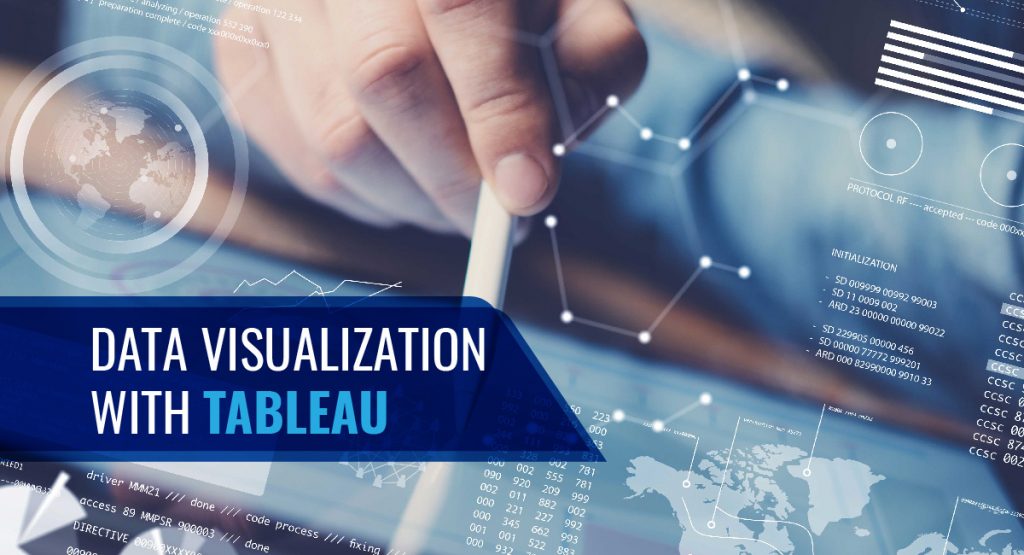
Look Out for Upcoming Powerful Trends in Automation and Visualization
1. AI and ML
Artificial Intelligence and Machine Learning render visualization more accurate and efficient. These technologies enable businesses to handle customer feedback without bias. Process automation allows you to sort the feedback in real-time and according to your specifications.
2. Unlock Big Data with Data Democratization
Large amounts of data are hard to understand. It requires data scientists and other experts to unlock its treasures. Not anymore. Advanced no-code data analysis platforms can automate your data process. This is called the democratization of data.
Democratization of data leaves it malleable and easy to display allowing your employees any level of tech support. When this is paired with the data visualization type, it can unlock big data results for teams at all levels of your organization.
3. Video Visualization Is Here to Stay
Young and old alike tend to retain the information they see over what they hear. This would mean that video infographics will be the future.
Video applications for business strategy and customer retention are key areas for future strategic data visualization implementation.
4. Real-time Visualization for Early detection
Knowing a problem at the exact moment it arises can assist businesses in customer retention and brand presence. Early detection can have a dramatic impact on the bottom line.
Process automation can help run a dashboard that allows users to submit their error reports to your customer support. Then the reviews can be tagged and analyzed using sentiment analysis.
5. Mobile Optimized Visualization
An increased number of people access the internet on their mobile devices. Your business needs mobile-optimized data visualization to stop customer churn.
It enables you to know if your potential customers are learning about your services through social media or an online review board. Though mobile-optimized visualization is an easy step, it is critical to keep your business on top of the game.
Read more: 7 Awesome Data Visualization Tools

Business Applications of Process Automation and Data Visualization
1. Financial Service and Insurance
The finance service industry is a prime candidate for process automation and data visualization. Two top requirements of this industry are customer response time and compliance with strict regulations.
When automated, quick decisions can be made based on pre-defined rules like loan applications, claims processes. businesses can use data visualization to make reliable predictions or risk calculations in the financial industry.
Insurance fraud can cost billions of dollars damage. Process automation and data visualization can improve fraud detection.
Read more: Deploying RPA for Finance, Healthcare, and IT Operations.
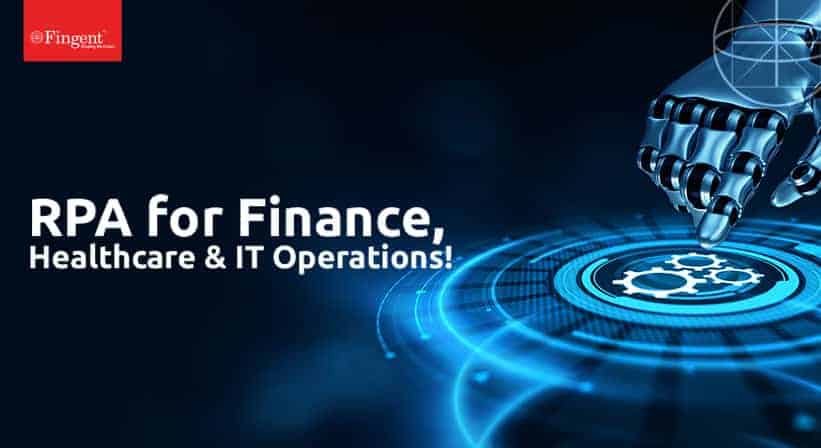
2. Distribution and Logistics
Process automation and data visualization can minimize costs by planning transport promptly, reducing costs of downtimes and maintenance.
3. Sales
Data visualization can greatly improve relationships with your customers. It helps you know the needs of your customers better, and address each of them directly in real-time.
4. Marketing
Data visualization and process automation can reduce marketing costs substantially. These technologies can help evaluate the demographics, location, transactions, and interests of your customers. Visualizing these details can help you understand their purchase patterns.
Thus, data visualization can be used to create and target new customer segments. Cross-selling is another advantage. At the same time, data visualization may reveal that customers are dissatisfied. Identifying this and responding quickly can counteract the situation to retain your customer base.
5. Healthcare
Process automation and data visualization enable cheaper healthcare. It can help predict disease occurrence and proactively propose countermeasures.
6. Science and research
Visualization enables the evaluation of the data of an experiment. Process automation and visualization can be advantageous especially when an experiment generates large amounts of data within seconds.
7. Production
Large amounts of data are generated during production. Using process automation and visualization can help plan preventive maintenance and prevent production delays or downtimes.
Prepare Your Business For The Future With Fingent
Fingent helps enterprises automate document-based processes. We can help you create safer sharing and collaboration. Our platform allows you to create teams, assign roles and privileges, and streamline communication.
Fingent’s partner integrations allow you to use it together with your existing software. Our top-level measures protect our users’ data. The encryption we provide ensures content integrity and prevents alteration.
Fingent can help your organization reach the goal of paperwork elimination. Doing so can lead to efficient resource distribution throughout the organization.
What’s more, it reduces carbon footprint. Our experts bring along specializations supported by scientific rigor and in-depth knowledge of advanced techniques to design, develop, and deploy solutions for process automation and visualization.
Give us a call today and let’s get talking.
Stay up to date on what's new

Featured Blogs
Stay up to date on
what's new



Talk To Our Experts
2021 saw great challenges overcome, extraordinary feats accomplished as businesses fought tooth and nail to keep their doors open. It has also been a time of great innovation. While the pandemic reshaped the previously established ways of life and work, the appetite for transformation continued to grow.
Though 2021 was a difficult year for businesses, the year’s disruptions led many businesses to adapt to the times and operate with impressive levels of flexibility. It was a year that presented learning, change, and growth opportunities.
As 2022 gathers momentum, businesses looking to rebound after the pandemic must consider all major technology changes that have happened in 2021. Doing so will aid in making decisions that will enable their business to demonstrate fortitude and remarkable ability to adapt as necessary under extraordinary circumstances.
This blog recaps key milestones and moments in 2021 that helped businesses break free from survival mode and refocus on a bright and successful future.
The Growing Reach of Digital Transformation
The digital transformation took center stage for businesses as legacy processes and old-school systems could not meet the demands of consumers and employees. Artificial intelligence-driven smart systems helped businesses become more resilient in a locked-down world.
These digital transformations enabled businesses to function efficiently, employees to increase productivity, and empowered customers to shop from the comfort of their homes. Towards the end of 2021, these new technologies and tools continued to mature and to create a future where people are shaping the world to fit their needs and preferences.
Workforce Technologies Increased Employee Productivity
In the pre-pandemic era, working from home was not considered as productive as working in the office. However, a two-year study by Great Place to Work determined that employee productivity was the same or even better when they worked from home.
Read more: Fingent Recognized as a Great Place to Work-Certified™ Company

As the workforce technologies got better, faster, and more powerful, there was an exponential rise in the hybrid workplace concept. These technologies allowed businesses to retain the culture, stability, and social interaction of a physical office as they allowed their employees to choose remote work.
The AI-powered HR technology empowers employers and employees to customize goals, roles, and structures. These powerful technologies help hybrid teams to stay connected to live, interactive systems even if they all work in different time zones.
Case Study: Learn more on how Fingent’s AI-Powered Virtual Assistant helps employees with HR & DevOps queries
Enhanced Omnichannel Experience
Providing a fluid omnichannel experience is critical to satisfying customers and building customer loyalty. An omnichannel experience enabled customers to interchange devices and move fluidly between various platforms. It created a truly seamless and consistent experience regardless of channel.
It allowed customers to start their search in one channel, pick it from where they had left on another device, and yet take the context forward with every interaction. Businesses ensured to develop their omnichannel strategy by unifying the digital and physical world.
The adoption of omnichannel enhanced retailers’ experiences as well. For instance, a customer may reach out on live chat with an issue and end the call only to realize later that he forgot to ask one more thing. Now, he may call customer service instead of using a live chat. Omnichannel experience will allow the agent to pull up that customers’ previous chat and have all of the contexts to quickly resolve his issues.
Personalization and Hyper-personalization with AR and VR Technologies
Personalization and hyper-personalization are the most advanced ways to increase revenue, smoothen customer journeys, and make conversations more meaningful. Personalization can be achieved only through careful analysis of customer data.
In 2021 businesses saw how retail analytics tools can provide actionable insights into customers buying patterns and preferences. This will help in customizing the offering. Virtual try-on, AR fitting rooms enable immersive shopping experiences. Moreover, high-value customers can be catered to exclusively and attract the right customer to increase sales.
Read more: Creating a Future workplace with AR & VR!

Blockchain Took Center Stage
Blockchain interoperability got better in 2021. It has been used to transform the nature of transactions and trade across the world. Blockchain technology made cryptocurrency a possibility. It is instrumental in lowering transaction costs, providing protection from cyber-attacks, helping maintain confidentiality, and more.
Another popular blockchain trend was BaaS or Blockchain as a Service. It is a cloud-based service that enables users to develop digital products like smart contracts or applications that can work without any setup requirement of a complete blockchain-based infrastructure.
Read more: How Blockchain Enables The Insurance Industry to Tackle Data Challenges
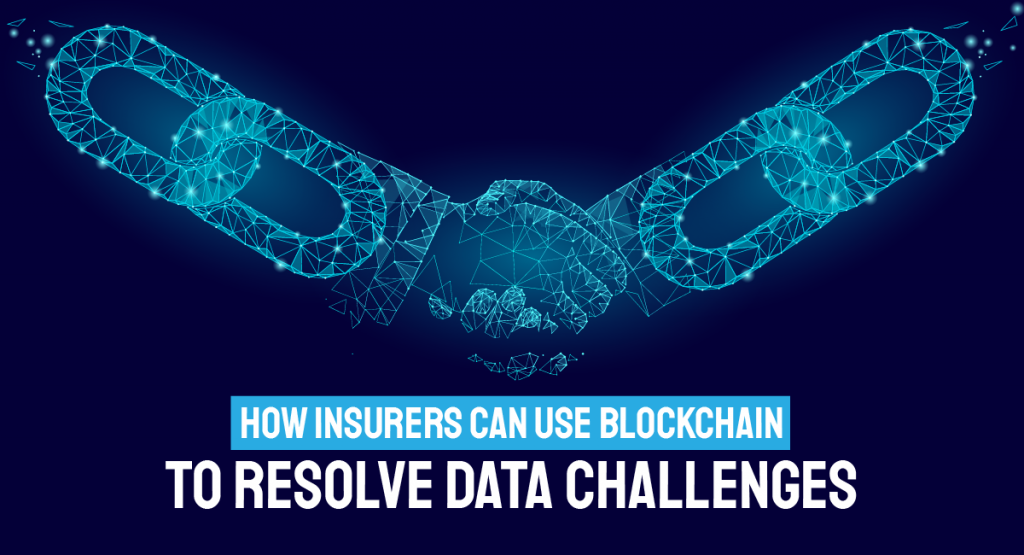
Real-time Visibility into Inventory and Services
To meet customer expectations, it is crucial to have the ability to view and track inventory levels at all times. Real-time visibility enables businesses to prepare for the unexpected. It also provides data and analytics needed to made better business decisions.
So, appropriate tools that leveraged AI and ML brought about improvement in maintaining accurate stock and preparing for future demand. These tools provided end-to-end visibility across the supply chain and helped businesses meet the growing customer demand.
Read more: How Data Warehousing Adds Value to Data Visualization and Reporting
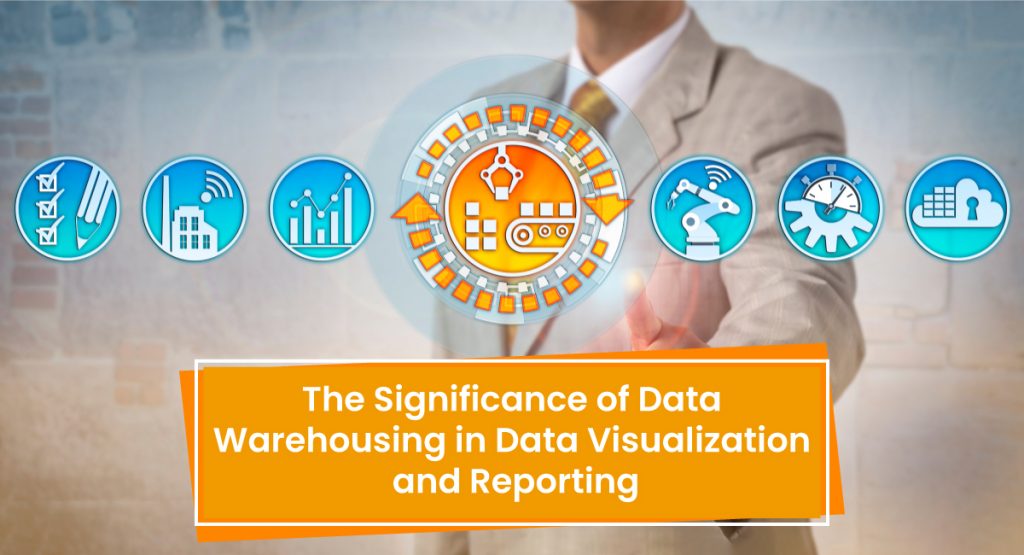
NFT Gains Traction and Expand into New Areas
In 2021, NFT (Non-Fungible Token) is drawing in new artists, musicians, and other creative people who want to make money. NFT bunny is modeled after social networks with each user having the ability to communicate with other users. Binance NFT allows an artist to buy or sell collectibles and other artworks.
Demand Forecast with The Help Of AI, Big Data, And Analytics
Data-driven business transformation gained popularity among retailers as it provided a strategic advantage. AI, Big Data, and Analytics help in understanding the deep patterns of the data from various sources used for demand forecasting. Retailers have immensely benefited from hourly, daily, weekly, and monthly level forecasts.
Resilient Supply Chains
The strategic application of AI-powered technologies has enabled complex and resilient supply chains. This has improved same-day delivery options. 2021 also saw the expansion of e-bikes managed by user-friendly apps and cloud-connected supply chain technologies.
Rising From the Ashes with Smarter Business Technologies
2021 has been a challenging year for most businesses. Amid pandemic and political upheavals, we saw exciting advances and breakthroughs in businesses technology. Also, customers are more value-conscious today than before. These technologies help reduce business operations costs and pass on the benefit to the customers. Leveraging these technologies is a smart way to build a resilient business. Excited to know which technology is best for your business? Call us and let’s work it out together.
Stay up to date on what's new

Featured Blogs
Stay up to date on
what's new



Talk To Our Experts
Why AI? What Can AI do for me? When? How?
So many questions about AI! Considering that AI has become a revolution that has taken today’s business world by storm, it isn’t surprising that there are so many questions.
Most businesses can testify to the fact that Artificial Intelligence (AI) has improved the way their business operates. Businesses implement AI to increase efficiency, grow their revenue, and improve customer experience. Let’s explore the benefits of AI and get to some of the top questions about AI.
Read more: Artificial Intelligence: Taking the buzz out of the buzz word!
Importance Of AI Implementation In Business Today
According to the 2020 Global AI survey conducted by McKinsey & Co, 44% of the companies reported cost savings from AI adoption in their business. They also reported that AI adoption has decreased business units cost by at least 10% on average. Is this the only benefit of AI implementation? Not in the least. Here is why AI is so important.
1. Efficiency
AI handles manual tasks at a pace and scale that is beyond human ability. This allows workers to move to higher-value tasks that AI technology cannot handle.
Such a well-calculated balance helps businesses minimize the costs associated with mundane tasks while maximizing the talent of human capital.
2. Shorter business timeline
Businesses are moving faster in this digital age. However, AI empowers businesses to move faster as it enables shorter development cycles and reduces the time taken to move design to production output. In turn, this shortened timeline delivers better and more immediate ROI.
3. Improved customer service
Delivering a positive customer experience has become a determining factor between a successful and an unsuccessful way of doing business. Best customer service includes knowing the customer, their needs, and presenting customers what they need when they need it. That is exactly what AI can do constantly.
4. Near-instantaneous monitoring capabilities
AI’s capacity to process massive amounts of data can help businesses stay alert to issues, recommend action, and initiate a response. This prevents costly and disruptive breakdowns and thereby eliminates the cost of maintenance work. AI’s monitoring capabilities can also be effective in enterprise cybersecurity operations.
5. Error-free results
Human employees are prone to mistakes. By adding AI technologies businesses can ensure that errors are minimized as it can automate repetitive, rule-based tasks. This speeds up and enhances the entire process. Plus, it can be trained to improve and take on broader tasks.
Though AI has proven to be important for business success, some hesitate. Why? Let’s find out.
Read more: The future of Artificial Intelligence: A game-changer for industries
Why Do Businesses Still Hesitate?
Some decision-makers remain hesitant because they feel they are venturing into the unknown. Here are some additional reasons:
- Limited AI talent: Larger organizations are more likely to have the necessary technical skillset to understand the business case for AI investment. Some lag behind because they do not understand AI’s value proposition.
- Data issues: Insufficient quantity or quality of data is a common barrier to AI implementation.
- Concerns about responsible AI: Some have concerns about ethical breaches with AI.
- Concerns about AI investment: Many companies are concerned about moonshot investment.
Answering Top Burning Questions On AI Business Application
The rise of the popularity of AI welcomes several questions that must be answered to help businesses make informed decisions.
1. How does my business benefit from AI implementation?
AI cannot do everything. However, it can give your organization the ability to run automated tasks, pull reports and analyze data at the touch of a button. This can give you a strong competitive advantage. AI is capable of processing enormous amounts of data to unlock actionable insights.
2. When should I consider building an in-house AI-powered solution?
- When you are building something that differentiates your core product. If the project is not central to your business mission it probably isn’t the best use of your team’s time and resources.
- When you have a sizeable engineering infrastructure because you will need dedicated resources to build, maintain, train, and improve your solution.
- When no vendors can meet all your requirements. Here’s a tip: when evaluating a vendor, ensure to ask for customer references and case studies of companies where they successfully implemented their AI solutions. Using a vendor can often be faster, cheaper, and provide better results than what a company can build on its own.
3. How to evaluate if a company’s AI is “good?”
Here, “good” depends on human talent, data, algorithms, and computing power. In other words, it depends on the company’s ability to gather the best data and the best skill set to solve the problem at hand. So, it can be helpful to ask companies what is the quantity of data, compare the relevance of their data with yours, and how the system was built.
4. Why is AI relevant to customer service?
The businesses that skillfully weathered the storm caused by the pandemic provided their customers and employees with reassurance, stability, and easily accessible information whenever needed. Deploying bots on websites will increase the use of self-service and provide relief to phone or chat queues.
Read more: 9 Examples of Artificial Intelligence transforming Business Today!
5. How can AI be used for a quick win?
AI bots can handle high volume repetitive tasks as we have already discussed. These tasks include answering questions, scheduling appointments resetting passwords, and more. Automating these tasks can provide quick and economically substantial wins.
6. What are the pitfalls to avoid?
There have been designs that left customers adrift in a sea of endless menu options. To avoid repeating this pitfall, design your bot thoughtfully and within the context of the end-to-end customer journey. This must include a seamless path to agents where customers do not have to repeat the information.
7. How can Fingent help leverage the best of AI?
AI systems require training and Fingent understands that. We are here not just to implement AI solutions. We will train, monitor, and make sure that it works. We have an excellent track record with business cases showing the financial value of implementing AI.
Our experts at Fingent can develop solutions that quickly show financial benefits. We have invested in extensive training, which is why Fingent’s AI specialists can strategically plan data warehousing and cloud computing in their sleep!
We can build on a foundation of open-source software and develop an AI solution that fits your needs on commodity hardware. We can also choose a platform that is simple to deploy and manage. We assure you that Fingent can understand and support the complete lifecycle. Fingent can provide AI applications to solve the previously unsolvable. Let’s discuss your project.
Stay up to date on what's new

Featured Blogs
Stay up to date on
what's new



Talk To Our Experts
The pandemic is now the biggest and most critical challenge of traditional banking. Some of these challenges are revenue pressure, data security, customer service management, data collection and analysis, risk management, and so on. These are the warning lights and alarm bells that call for caution over emerging risks. AI (Artificial Intelligence) has gained recognition as an effective solution.
AI is empowering the banking industry to provide individualized frictionless customer experiences. It is driving customer loyalty and profitability by automating banking processes.
In this article, we will discuss how AI can resolve banking challenges. We will also discuss some of the common challenges banks might encounter in implementing AI and how a tech partner can help deploy AI better.
How AI Can Resolve Banking Challenges?
AI is the new electricity – Andrew Ng.
Modern technology such as AI can be tailored to the specific needs of the banking sector. The digital age is opening up new opportunities. According to a Business Insider research report, banks are expected to save an estimated $447 billion by 2023 with the help of AI applications. Given that, here is how AI can resolve some challenges.
Read more: Digital Transformation in Financial Services: All You Need to Know
1. AI-enabled conversational interfaces
Chatbots are one of the most popular cases of applying AI in banking. Bots are programmed to communicate with thousands of customers with minimum expense. Insider Intelligence estimates that the adoption of chatbots could save the banking sector $11 billion annually by 2023.
Mobile banking has become the most popular and chatbot services attract users’ attention and create a unique brand identity. AI functionality in mobile apps is helping banks generate more revenue than when customers visit their branches. Banking organizations that leverage AI improve their quality of services and remain competitive despite the crisis.
2. AI-enabled data collection and analysis
Banks generate an enormous amount of data every day. Collecting and recording this data is an overwhelming task for employees. Besides, all this work may be a wasted effort if there is no proper plan to use this data. Hence banks need to determine the relationship between the collected data. That is another major challenge.
AI-based apps improve the user experience by collecting and analyzing data. The collected data then can be used to grant loans or fraud detection.
3. AI-enabled Risk management
Providing loans is a challenging task for bankers. Extension of credit to a fraudster can get the bank into difficulties. Or a borrowers’ economic downturn can adversely affect the bank. 2020 statistics show that credit card delinquencies in the US alone rose by 1.4% in a duration of six months.
AI-enabled systems can appraise a customer’s credit history more accurately. Additionally, AI-powered mobile banking apps track financial transactions and analyze user data to help banks anticipate the risks associated with the extension of credit.
4. AI-powered data security
Credit card fraud is on the rise. It is the most common type of personal data theft. AI-powered systems can analyze customer behavior, location, and financial habits. So, if it detects any unusual activity, it triggers a security mechanism immediately.
Read more: Artificial Intelligence and Machine Learning: The Cyber Security Heroes Of FinTech
When all these challenges are successfully tackled, how does the AI-powered bank look like? Read on to find out.
How Does The AI-First Bank Look Like?
AI-bank rises to meet customers’ expectations and remain competitive. The AI-powered bank will offer intelligent and personalized propositions and experiences as it understands customers’ past behavior. It can span across multiple devices providing a consistent experience to its customers.
What Are The Common Challenges Banks Might Face In Implementing AI?
Implementing AI technology in banking is not always easy. You need to ensure you have the right team and expertise. You will also need access to data, resources to invest in the project, and parties that are willing to adopt the new technology.
- Access to data: It is one of the biggest challenges to implementing AI. Additionally, banks might face challenges with training data. It becomes hard to update or improve the AI models if the team does not have the necessary information to use and learn from.
- Localization: Localization is critical to the banking sector as they often need to design models with multiple markets that they serve. Localization can help you properly customize the customer experience. Your data partner can support you with localization as they have skilled linguists to develop aspects such as style guides and voice persona.
- Security and compliance: It is quite challenging to keep all the data confidential and secure. The right data partner can offer a variety of security options. They have security standards to ensure your customers’ data is securely handled. Look for data partners who have strong data protection with certifications and regulations. They will be able to provide secure annotation. They will also provide onsite service options, private cloud deployment, on-premise deployment, and so on.
- Trust, transparency, and explainability: AI models can only be successful if they can be understood and trusted by customers as they will want to be sure that their personal information is handled and stored securely. Talk to your partner and ask them to explain the model to you. Or you can always go back to the training data that was used to develop the model and extract some explainability.
- Data pipelines: Connecting data pipeline components to use siloed data is not as easy as it seems. To do this effectively, banking institutions must ensure their data is collected and structured correctly. They must also ensure that this information enables ML models to predict according to the business goals. Look for a partner with extensive security offering as their expertise will enable your banking service company to be successful and scale.
Read more: The New Untapped Opportunities for FinTech Companies in the Coming Years
How A Tech Partner Like Fingent Help Deploy AI Better?
Implementing AI into banking is a serious responsibility. It takes in-depth knowledge, an enormous amount of time, and dedication to accuracy. That is what Fingent has. We do not just follow the trends. Instead, we focus on how AI can add value to your particular banking needs.
Fingent can bring transparency and explainability of AI automated decision making to your banking processes. We can provide an easy-to-use interface through APIs delivered either on-premise, in the cloud, or as a SaaS offering.
By embedding AI and ML into our products, we can accelerate the release of explainable business models that will underpin new AI use cases. These can help create a seamless customer journey and automate manual processes with self-learning capabilities. We are confident that we can help you deploy AI better. Give us a call and let’s get talking.
Stay up to date on what's new

Featured Blogs
Stay up to date on
what's new



Talk To Our Experts
A Comparison of Top 5 NLP Platforms: Select Your Chatbot Development Platform Wisely
The surge of artificial intelligence-based applications and conversational AI have heightened the use of NLP (Natural Language Processing). Each day, businesses collect an enormous amount of structured and unstructured data from their customers and users. Such information is collected through chatbots, intelligent assistants, and so on. Analyzing these data offers businesses insights into crucial operations and enhances their decision-making. However, manually inferring insights from tons of data is a challenging endeavor. This is where NLP platforms plays a vital role. This article will help you evaluate five different NLP platforms you can consider while developing a chatbot for your business support functions.
How Does NLP Platforms Help Businesses
Gartner and IDC report that more than 80% of the enterprise data generated today is unstructured. Natural Language Processing (NLP) technology helps us derive meaning from the vast labyrinth of online data. NLP refers to applying several computational techniques that enable us to do analysis and synthesis of natural language and speech. According to a report by Intrado GlobeNewswire, the NLP market is expected to be work USD 42.04 billion by 2026.
Chatbots are software applications that help us conduct conversations online via text or text-to-speech instead of directly communicating with a human agent.
Chatbots provide a better service experience to customers by responding to customer queries promptly, accurately, and most importantly, like humans. AI-powered chatbots can be trained to learn from data to respond in different and diverse scenarios.
However, picking the right chatbot platform can be a gigantic task. Here’s an analysis of five NLP platforms. Choose your chatbot development platform wisely.
Read more: Capitalizing on AI Chatbots Will Redefine Your Business: Here’s How
1. IBM Watson Assistant
A pioneer in the chatbot market, IBM’s Watson Assistant has evolved into a holistic customer care product. As the pandemic weighed heavily on businesses, customers and employee services were challenged in unimaginable ways. IBM Watson Assistant is designed to solve customer and employee challenges, so its relevance became even more significant during this time. Using IBM Watson Assistant to create your chatbot helps in the following ways:
First contact resolution
Resolving questions quickly and successfully is one of the biggest priorities of Watson Assistant. One of the critical challenges of first contact is user engagement. If that is your concern, here is how Watson contact can help:
- Allows integration with the phone, SMS, and WhatsApp: As it can integrate with phone and SMS, you can deploy speech services with natural sounding voices created with the help of advanced AI.
- Best intent recognition accuracy: Watson Assistant helps you understand your customers’ questions without always requesting them to rephrase the question.
Open ecosystem
Watson Assistant is designed as an open ecosystem. It, therefore, allows you to connect with your existing tools, systems, and applications. Besides, it gives you the ability to orchestrate the end-to-end experience.
Scale your assistant to increase complex use cases
Watson Assistant allows you to scale your virtual assistant beyond simplistic FAQ bots. It can be customized easily to fit the specific needs of your business.
Use cases: Companies such as Botanalytics, Ebix, and SnapEngage use Watson Assistant.
2. Amazon Lex
Amazon Lex allows you to create and embed engaging chatbots into your applications, shielding you from the complexities of NLU (Natural Language Understanding) and speech recognition. Here are some of the top features of Amazon Lex.
Quicker integration
The capabilities of Amazon Lex are simple and easy to use, allowing you to scale up from ground zero to a fully operational chatbot within a matter of minutes. Using a combination of aliases and versioning, you can roll out your conversational interfaces into multiple environments.
Cost-effective solution
Amazon Lex has no upfront costs. You can pay-as-you-go.
Fully managed service
It provides all the necessary features to build, deploy, scale, and monitor your chatbot.
Business use cases
- Commerce chatbot: Allows you to order food
- Support chatbot: Provides automated customer support
- Enterprise chatbot: This allows you to connect to enterprise data resources
- Use cases of Companies: Lumeneo.com, Paralect, and CommonBond use Amazon Lex.
3. Rasa
Rasa platform is an open-source framework. It is leading in ML toolkits that help developers create better chatbots with minimal training data. The two major components of the Rasa stack are Rasa NLU and Rasa Core. Rasa core helps create intelligent, conversational chatbots.
It is best for businesses that are looking to increase subscriber engagement and for those who are interested in marketing automation and personalization.
The benefits of Rasa are:
- You can deploy into your own server by keeping the components in-house
- Highly customizable
- Allows for multiple environments necessary for development, staging, and production
- It helps you send individualized newsletters to each of your subscribers
- It continues to self-learn when it interacts with people
- It allows you to understand your customers better
- It can be integrated with Facebook Messenger, Twilio, Telegram, and more
4. SpaCy
Spacy is an open-source NLP library that is designed for production usage. It helps you build real-world projects and handle large amounts of text data. It is a one-stop operation for most heavy-hitting functions for NLP.
It is best for companies that are bootstrapping a vast production or for vendors in charge of enterprise solutions. It has proven highly useful for companies that require industry-level solutions and need enhanced language support.
Some of the benefits of SpaCy are:
- It easily allows deep data mining
- It does not weigh down the user with obscure formulas
- It can analyze text quicker than its competitors
- Enables businesses to implement strategies to interact with customers and leads
- It is capable of working with over twenty languages
- Allows you to handle NLP solutions across an international suite of languages.
- It is a powerhouse for every deep learning algorithm with the tools you need to teach your programs human language.
5. Microsoft Azure
Microsoft Azure bot service helps you develop, deploy and host a chatbot in an uncomplicated manner. It is a managed bot-building platform with an integrated environment. It is purpose-built for bot development.
Microsoft Azure bot services are best for enterprises and IT companies.
- It helps run FQAs speedily and consistently reducing customer management issues
- Easy to integrate with various Azure services
- You can build, connect, test, deploy and manage intelligent bots from one place
- Easy to integrate with other chatbot software such as Jabber or Skype
Read more: How to Choose the Right Chatbot for Your Business
Why choose Fingent as your chatbot development partner?
Acquire estimates that nearly 1.4 billion people are willing to talk to chatbots. Did you know that chatbots can handle 80% of routine customer questions? These figures prove that the chatbot platform is the present and future of your business.
However, it is important to choose a chatbot development partner carefully. We at Fingent ensure your chatbot platform is easy-to-use even for non-tech employees. A customized and fine-tuned chatbot frees people up from low value, boring, repetitive, and transactional tasks. It enables your employees to focus on high-value, strategic, engaging, and creative work. The business value also lies in that the chatbot provides consistency and coherence to your communication, reduces/ eliminates confusion for the end-user while giving an instant response. It helps your employees get things done fast as they need not worry about the low value, boring, repetitive, and transactional tasks. Thanks to chatbot development!
We will work with you through all the stages, from requirements identification, technology selection to planning and implementation. We will continue to support you in managing the chatbot after deployment. While you zero down on the chatbot platform, choosing the right partner to help you develop the chatbot according to your specific requirements is essential. Give us a call, and let us get talking.
Stay up to date on what's new

Featured Blogs
Stay up to date on
what's new



Talk To Our Experts
How is AI Facilitating Healthcare Innovation Over Years
Today Artificial Intelligence (AI) is being used to enhance and improve all spheres of our lives. Artificial Intelligence in medicine is truly life-altering. The technology is used to solve complex healthcare challenges today. AI in medicine helps interpret the data obtained by diagnosing several chronic diseases such as diabetes, cardiovascular diseases, Alzheimer’s, and cancer. Automated systems, tools, and algorithms allow healthcare professionals to minimize errors and control disease progression.
Artificial Intelligence in medicine has considerably advanced two fields: diagnosis and clinical decision-making. The implementation of AI in medicine enables physicians to minimize intra-observer variability and inter-observer variability. It facilitates the interpretation of diagnostic results with high accuracy and speed.
A real-life example: Chest X-rays are among the most common imaging modalities read and interpreted by radiologists in hospitals today. Despite their widespread use, the modalities are difficult to interpret due to their low resolution. The AI models developed by IBM Research Center in California can read X-rays, and their performance is at par with the resident radiologists.
This blog explains how Artificial Intelligence in medicine has been transforming healthcare in the past and present and how it can benefit us in the future.
Read more: Innovative Ways To Leverage Patient-Generated Health Data
How AI has transformed healthcare in the past
In the past, Artificial Intelligence focused primarily on the development of computerized machines that were capable of making inferences or decisions that only humans can make. In 1966, Shakey- “the first electronic person” was developed. It was a mobile robot capable of interpreting instructions. Unfortunately, reduced funding and lack of interest pushed Artificial Intelligence in the medical industry into a phase popularly referred to as “AI winter.” Thankfully, that was not the end.
How is AI transforming the present
Artificial Intelligence in medicine has crossed numerous milestones after the bleak “AI winter.” The present generation has witnessed a paradigm shift across patient treatment, clinical diagnosis, and decision-making. Armed with large amounts of data, doctors are now more capable of providing effective treatment to their patients. AI has revamped analytic methods and changed clinical decision-making techniques.
Read more: 7 Major Impacts of Technology in Healthcare
Increased data volumes enable decision-makers to gain unparalleled insights in all stages of treatment, such as diagnosis, treatment variability, care process, and patient outcomes. According to an analysis by Accenture, Artificial Intelligence in medicine can save 150 billion dollars for the US economy by 2026!
Here’s how AI is transforming medicine and improving patient outcomes.
1. Electronic health records
A CDC survey revealed that nearly 75% of healthcare providers trusted their EHR to improve patient care. AI can make the existing EHR system more intelligent and flexible. AI can improve data discovery and personalize treatment recommendations.
When used with virtual medical assistants, a practitioner can retrieve information from EHRs without becoming a victim of clinical burnout. Thus, AI in EHR can improve both clinical outcomes and clinicians’ quality of life.
2. Medical imaging diagnostics
Medical imaging developers have discovered numerous ways to use Artificial Intelligence in medicine to detect and diagnose a wide range of diseases. These developments range from automating workflows to improving processing speed.
While AI imaging may seem expensive, it saves a vast amount of capital spent on invasive disease treatment and prolonged hospital stays by detecting the disease at an early stage. Ai also improves the accuracy of screenings for conditions by helping doctors in early diagnosis. The advent of molecular imaging allows doctors to diagnose an ailment at the cellular level leading to accurate treatment, better patient outcomes, and decreased mortality and morbidity.
3. Virtual health assistance
Virtual health assistance enhances outcomes by cutting short hospital stays, reducing readmission rates, and improving the patient experience, especially among chronically ill patients. Combining AI with healthcare wearables helps streamline telemedicine and improve patient outcomes.
A Virtual Health Assistant is developed to manage chronic diseases. It collects information about a patient every time he/she visits a doctor. It can be programmed to perform health screenings and send the results to the doctor. Each healthcare facility may choose to have a tailored virtual health strategy. This will help integrate appropriate healthcare platforms and technologies into the delivery model.
4. Proactive medical care
Conventional medical treatment involved treating the patient after detecting the disease. This was called ‘reactive medical care.’ Thankfully, AI brought in a significant shift turning reactive medical care into ‘proactive medical care.’ AI-enabled proactive medical care includes studying patients’ medical history to locate high-risk markets for various diseases. Then they are monitored for any changes. Once an alarming change is detected, the application suggests medical intervention.
These apps encourage the patient to be an active participant in their personal healthcare. These can be extremely helpful or even life-saving in conditions such as palliative care, congenital heart disease, and diabetes management. Such proactive medical care enables the patient to take care of oneself’s daily routine, including emergencies.
Read more: The Application and Impact of Information Technology in Healthcare
Future of AI in medical industry
The journey of Artificial Intelligence in the medical industry has just begun. It has significantly changed patient experience, clinicians’ practice, and pharmaceuticals. AI has found its way from our smartwatches to the supply chain. The future of AI in medicine includes everything from answering the phone to therapeutic drug and device design, making clinical diagnoses and treatment plans, and even conversing with patients. Here are two examples:
1. Drug discovery
AI solutions for the medical industry can identify new potential therapies from vast information available on existing medicines. These will help healthcare providers in redesigning treatments that target new threats such as the Coronavirus. AI can improve the efficiency and success rate of drug development. It can also accelerate the process in response to deadly disease threats.
A report by PwC states that the healthcare and pharma sectors are experiencing 67% improvement in clinical trials and drug discovery with the help of AI.
Listed below are a few examples of how AI handholds frontline workers in the battle against Coronavirus pandemic:
- AI-enabled contactless and wireless thermal scanning devices designed to collect and store precise temperature data of individuals. Care providers can integrate this data into healthcare platforms for further analysis.
- AI-based computer vision programs that can be integrated into drones and CCTV cameras installed in public places to monitor the adherence of the public to COVID safety protocols. It can send real-time alerts to police and public health departments in case of safety violations.
- AI-based robots that help physicians and healthcare workers with patient screening to avoid the risk of virus exposure. It can also enable video conversations with medical experts to procure prescriptions.
- Customized AI applications that help predict COVID-19 symptoms through sample screening. AI also helps in predicting COVID risk scores.
2. Primary care
Multiple organizations are working on ‘direct to patient solutions’ offering advice through voice or chat-based interaction. This can enable patients to receive quick, scalable access for their medical issues minimizing unnecessary trips to the healthcare facility. Healthcare providers should use AI-based direct-to-patient solutions to provide essential guidance for patients in remote geographies of the world.
Artificial Intelligence is revolutionizing the medical industry
Artificial intelligence in medicine is changing the role of doctors and medical professionals. It is also helping patients improve personal health management. AI is here to grow and transform numerous aspects like diagnosis, decision-making, treatment plan, drug development, etc. AI can play a leading role in how the future medical industry operates, ensuring optimal patient outcomes.
Fingent keeps a close eye on the happenings in the medical industry and has developed the necessary capabilities to enable a connected healthcare ecosystem for our clients by developing advanced, end-to-end digital solutions.
Give us a call, and let’s discuss your digital needs.
Stay up to date on what's new

Featured Blogs
Stay up to date on
what's new



Talk To Our Experts
How AI is transforming businesses worldwide
Post the PC and the dot-com revolution, the world is witnessing another significant disruption- Artificial Intelligence.
Businesses that implement AI applications will have better access to data across multiple functionalities such as customer relationship management, enterprise resource management, fraud detection, finance, people operations, IT management, and other crucial segments. AI helps businesses find solutions to complex problems in a more human-like way and automate processes. Organizations can redirect their resources towards more creative aspects such as brainstorming, innovating, and researching.
The COVID-19 pandemic required solutions in days, not weeks or months, and business leaders needed to act quickly. AI-based techniques and advanced analytics are helping organizations augment decision making during crises like the coronavirus. While machine learning models were a great choice, developing machine learning models or advanced analytical models would take around four-eight weeks. So, the pandemic accelerated the demand for developing minimum viable AI models quickly.
Despite the many naysayers who believe robots will take over human jobs in the future, AI is already revealing itself as more of an enabler than a disruptor. Here are nine examples of artificial intelligence transforming business.
Read more: How Will Artificial Intelligence Transform The World By 2030
1. Sales and business development
As lockdowns and stay at home orders continue, people are now moving from personal interactions to digital interactions such as online shopping and mobile banking. This shift has created many new and unstructured data that is hard to interpret. That’s where AI comes into the picture and helps understand what consumers feel and need.
AI-powered sales performance solutions can identify which customers are most likely to buy a company’s product or service. This model will help people in sales prioritize their customers and improve their productivity and effectiveness.
2. Demand and Supply
Most companies are interested in matching demand and supply. For instance, a steel company may have information about various factors that may influence steel demand. Typically, these demand measures depend on external data to match up with what the company’s supply chains can generate.
AI solutions help analyze these external data and ensure that the company is not producing more than you need to satisfy the demand and not leaving any request unfulfilled.
COVID-19 crisis is unprecedented, and companies have to make sure that they use data that is representative. Historical data allows you to gain insights into upcoming demand patterns and predict possible outcomes.
3. Back-office tasks
Companies can leverage AI-powered cognitive assistants to perform their back-office tasks such as ordering new credit cards, canceling orders, or issuing refunds. If these assistants cannot handle complex tasks, human assistants can perform those tasks. It will ensure that the team members spend their time solving challenging problems and focus on productive activities.
As long as there are structured tasks, Robotic Process Automation can take care of back-office service operations. RPA is particularly useful for automating the claims processes of banks or insurance companies. Enterprise platforms like SAP offer Intelligent RPA that combines automation and artificial intelligence to augment business process automation.
4. Cash-flow forecasting
As revenue systems dry up, cash flow is likely to be a severe concern for smaller businesses. However, several AI solutions can analyze data (only if representative) for cash-flow forecasting.
Read more: 6 Ways Artificial Intelligence Is Driving Decision Making
5. Document and identity verification
AI can identify and verify documents easily. For example, think of a bank that needs to verify customer data for onboarding and compliance. Human agents manually verify documents such as driving licenses or payslips and other relevant records. It is a costly and inefficient process.
AI is used to identify the type of ID document captured, perform face-matching, determine if the ID’s security features are present, and even determine if the person is physically present.
6. Travel and transportation
The transportation industry forms an integral part of a country’s infrastructure. As many employees may have to self-isolate during the COVID-19 crisis, AI solutions can analyze the number of staff needed by a travel company to run its business in these unprecedented times. For example, a company can request AI to provide information on whether they have enough workers to staff a railroad. Here, AI can help identify demand and supply from the laborers’ standpoint.
AI is already being used in the transportation industry to reduce traffic congestion, avoid accidents, improve passenger safety, lower carbon emissions, and reduce overall financial expenses.
7. Healthcare
From robot-assisted surgeries to safeguarding personal records against cybercrime, Artificial Intelligence is transforming the healthcare industry like never before. The healthcare industry has suffered in terms of medical costs and inefficient processes.
AI-enabled workflow assistants are helping doctors free up 17% of their schedule. Virtual assistants are reducing redundant hospital visits, thereby giving nurses almost 20% of their time back. Also, AI helps pharmaceutical companies research life-saving medicines in a shorter time frame and reduce costs. More importantly, AI is being used to help improve healthcare in underdeveloped nations.
Read more: 7 Major Impacts of Technology in Healthcare
Examples of AI in healthcare:
- PathAI creates AI-powered technology for pathologists to help them analyze tissue samples and diagnose them more accurately.
- Atomwise uses AI and deep learning to improve drug discovery and to speed up the work of chemists.
- Pager is using artificial intelligence to help patients with minor pains, aches, and illnesses.
8. Finance
The financial sector relies on real-time reporting, accuracy, and processing of high volumes of quantitative data, where AI can enhance the processes. The finance industry is rapidly implementing chatbots, automation, algorithmic trading, adaptive intelligence, and machine learning into financial operations. For instance, Robo-advisor, an automated portfolio manager, was one of the biggest financial trends of 2018.
A few examples of how artificial intelligence transforms the financial industry:
- Betterment uses AI to learn about an investor and create a personalized investor profile based on their financial plans.
- Numerai is an AI-powered hedge fund that uses crowdsourced machine learning from many data scientists worldwide.
Read more: Artificial Intelligence and Machine Learning: The Cyber Security Heroes Of FinTech
9. Social Media
With over 3.6 billion active profiles and about $45 billion in annual revenue, social media is invariably in the battle to personalize and provide a better experience for users.
AI can organize massive amounts of data, recognize images, predict shifts in culture, and introduce chatbots. The technology has the potential to make or break the future of the social media industry.
Similarly, machine learning enables social media to identify fake news, hate speeches, and other anti-social activities in real-time.
Final thoughts
With the advancement in technologies, AI is improving possibilities taking businesses to the next level. These examples of artificial intelligence prove that artificial intelligence can transform business models if deployed correctly.
Case Study: Development of AI-enabled chatbots and teaching assistants – How Fingent helped a leading university to create an Automated Intelligence-driven ecosystem
Fingent helps you leverage AI to drive the smart reinvention of your business workflows, processes, and technology. If you are looking to develop an intelligent infrastructure for your business or improve the security process or enhance the customer experience, contact us today!
Stay up to date on what's new

Featured Blogs
Stay up to date on
what's new



